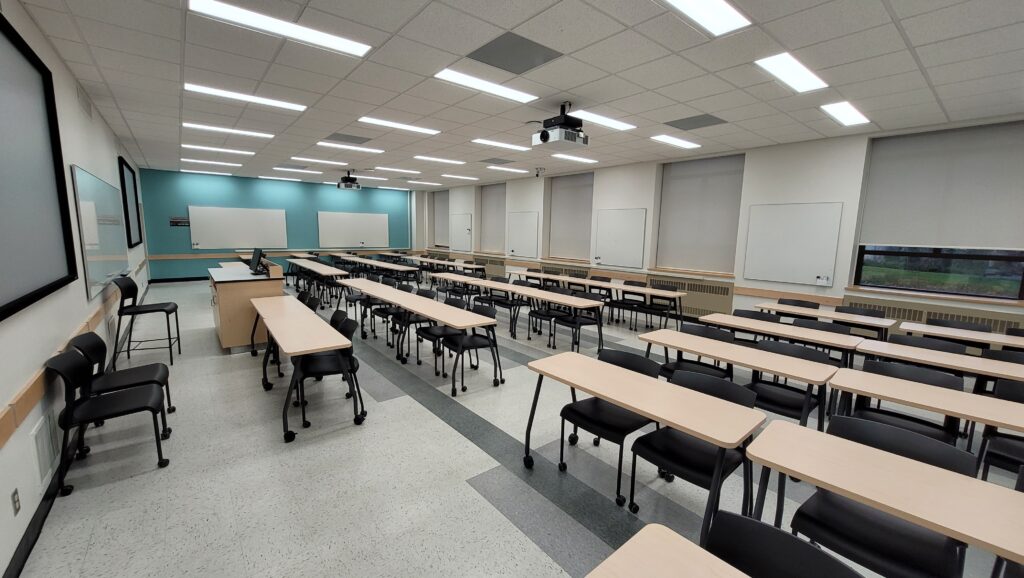USask spaces that flex with the type of learning

Many USask classrooms have been designed with one thing in mind – successful transmission of information from the faculty member to the students. Even as technologies changed over time, that model did not – we just added screens, data projectors for our slideshows, and cameras and microphones to capture a lecture. Current theories of learning tell us that people learn some things well by hearing about them, but they need to pair that with talking to others about it, practicing and getting feedback, and actively doing for most types of learning. We are now designing flexible classrooms that can do each of these types of learning in a sequence, all in the same space.
What is a flexible classroom like?
A flexible classroom is one that can be used across all parts of the learning process in a standard class including receiving new information, making sense of that information, practicing, and getting feedback. Flexible classrooms have three key characteristics that are different from a fixed seat lecture theater or classroom at USask:
- The instructor can move around the room to help any individual student during work time.
- The seats and tables are easily moved into different configurations like lecture, small groups, or out of the way.
- There are surfaces like white boards on multiple walls, so groups can practice and share thinking, and other people can see what they write.
Not sure how different configurations of the furniture would work for your class?
Matching a flexible classroom matches USask Teaching Priorities
| Priority | Connection to beliefs about teaching | How Flexible spaces embody the beliefs |
| Indigenization | Providing safe spaces that share power and ideas allows Indigenous student success and supports Indigenous worldview and teachings for all students. | Provides easy opportunity to sit in a circle format, where no one person dominates, and it is clear we are on a learning journey together. |
| Internationalization | Providing opportunities to work in daily conversation with other students increases fluency in spoken English for international students, and supports inter-cultural dialogue and understanding for all students. | Moving to small groups and writing on white boards embodies the idea that different perspectives help shape richer common understandings. It also supports language learners. |
| Experiential Learning | Providing opportunities to do something in an authentic context adds extra complexity and requires deeper understanding than just “knowing about” something. It ensures you have all the skills you need to do something well. | Learning by doing requires a space designed for moving around, collaborating with others, practice, and feedback. |
This resource is shared by the Gwenna Moss Centre for Teaching and Learning (GMCTL), University of Saskatchewan, under a CC BY-NC-SA license.
